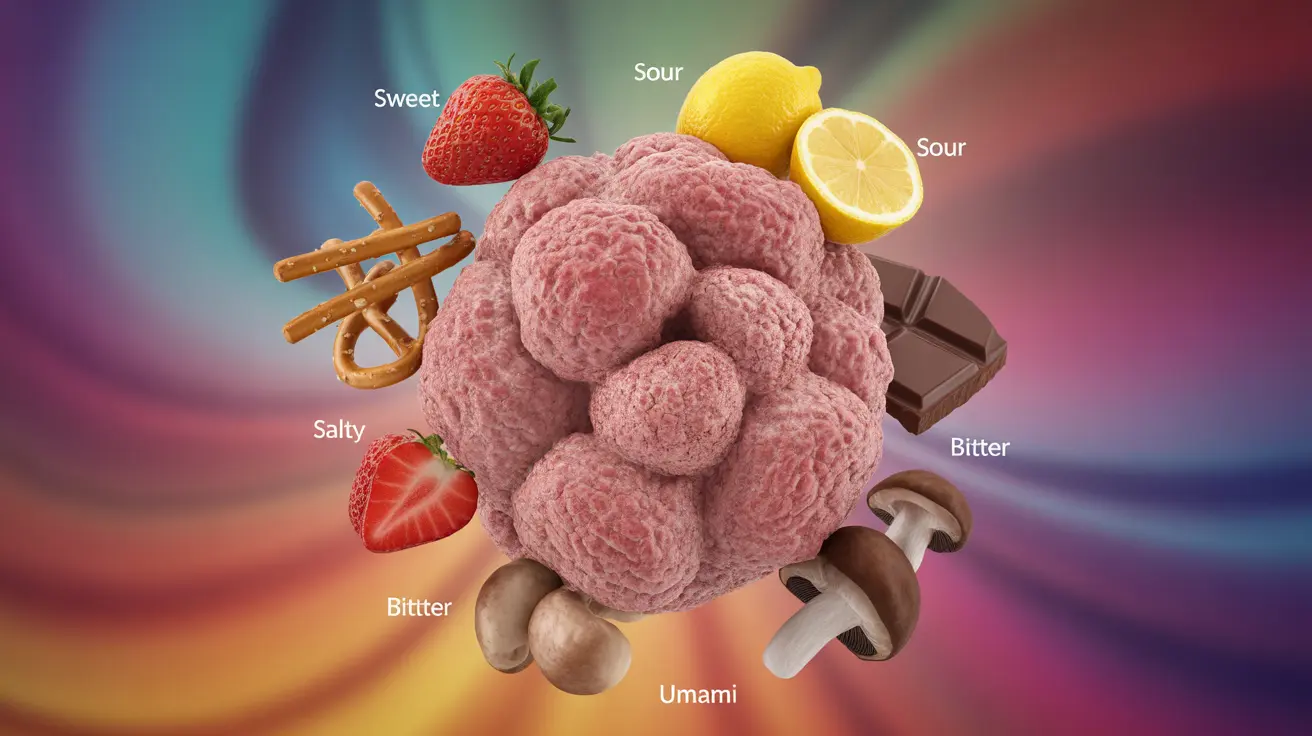Our ability to taste food is a fascinating and complex sensory experience that plays a crucial role in our survival, nutrition, and enjoyment of life. While many people think of taste as a simple sensation, it's actually a sophisticated system involving multiple distinct taste types that help us identify beneficial nutrients and avoid potentially harmful substances.
In this comprehensive guide, we'll explore the different types of taste, how they work, and their importance in our daily lives. Understanding these taste sensations can help you better appreciate your food choices and recognize why certain flavors appeal to you more than others.
The Five Fundamental Types of Taste
Scientists have identified five primary taste types that our taste buds can detect. Each serves a specific biological purpose and helps us make important decisions about what we eat.
Sweet Taste
Sweet taste typically indicates the presence of carbohydrates and sugars, which are essential energy sources for our bodies. Our taste buds detect sweetness through specific receptors that respond to various sugar molecules and artificial sweeteners. Common sweet-tasting foods include fruits, honey, and many processed desserts.
Salty Taste
The salty taste helps us identify foods rich in sodium, an essential mineral for maintaining proper nerve and muscle function. Our bodies have evolved to find salty tastes pleasant because sodium is crucial for survival. Common sources include table salt, sea salt, and naturally salty foods like olives and seaweed.
Sour Taste
Sour taste receptors respond to acidic compounds and help us identify foods that might be unripe or spoiled. However, many healthy foods have a pleasant sourness, such as citrus fruits, yogurt, and fermented foods. This taste plays an important role in balancing flavors in cuisine.
Bitter Taste
Bitter taste evolved as a warning system to protect us from potentially toxic substances, as many poisonous compounds taste bitter. However, many beneficial foods also have bitter components, such as dark chocolate, coffee, and various leafy greens. Our appreciation for bitter tastes often develops with age.
Umami Taste
Umami, often described as savory or meaty, indicates the presence of protein-rich foods. This taste is triggered by glutamates and nucleotides found in foods like meat, aged cheeses, mushrooms, and fermented products. It plays a crucial role in making foods satisfying and appealing.
How Taste Detection Works
Our taste buds contain specialized receptor cells that respond to specific chemical compounds in food. When these receptors are activated, they send signals to our brain through various nerve pathways. The brain then interprets these signals as distinct taste sensations, often combining them with smell, texture, and temperature to create our complete flavor experience.
Beyond the Basic Five
Recent research suggests there might be additional taste types beyond the traditional five. Scientists are investigating potential receptors for:
- Kokumi (mouthfulness and richness)
- Oleogustus (fatty taste)
- Starchy taste
- Calcium taste
These potential new taste types are still under investigation, and more research is needed to fully understand their roles in our taste perception system.
Frequently Asked Questions
What are the five main types of taste and what foods typically represent each type? The five main types are sweet (sugar, fruits), sour (citrus, vinegar), salty (table salt, chips), bitter (coffee, dark chocolate), and umami (meat, aged cheese). Each type is represented by specific foods that strongly exhibit these taste characteristics.
How do our taste buds detect different tastes like sweet, sour, salty, bitter, and umami? Taste buds contain specialized receptor cells that respond to specific chemical compounds in food. When these compounds bind to the receptors, they trigger electrical signals that travel through nerve fibers to the brain, where they're interpreted as distinct taste sensations.
Why do bitter and sour tastes sometimes signal that food might be harmful or spoiled? These taste sensations evolved as protective mechanisms. Bitter taste often indicates the presence of potentially toxic compounds, while sour taste can signal fermentation or spoilage. This helped our ancestors avoid dangerous foods.
What biological role does umami taste play in nutrition and appetite? Umami taste signals the presence of protein-rich foods, which are essential for nutrition. It helps us identify foods high in amino acids and can trigger the release of digestive enzymes, making it important for proper nutrition and satisfaction from meals.
Are there other taste types besides the basic five, and what is current research suggesting about new tastes? Yes, researchers are investigating several potential new taste types, including kokumi (richness), oleogustus (fatty taste), and starchy taste. These candidates are still being studied to determine if they qualify as primary taste sensations rather than texture or combination effects.




